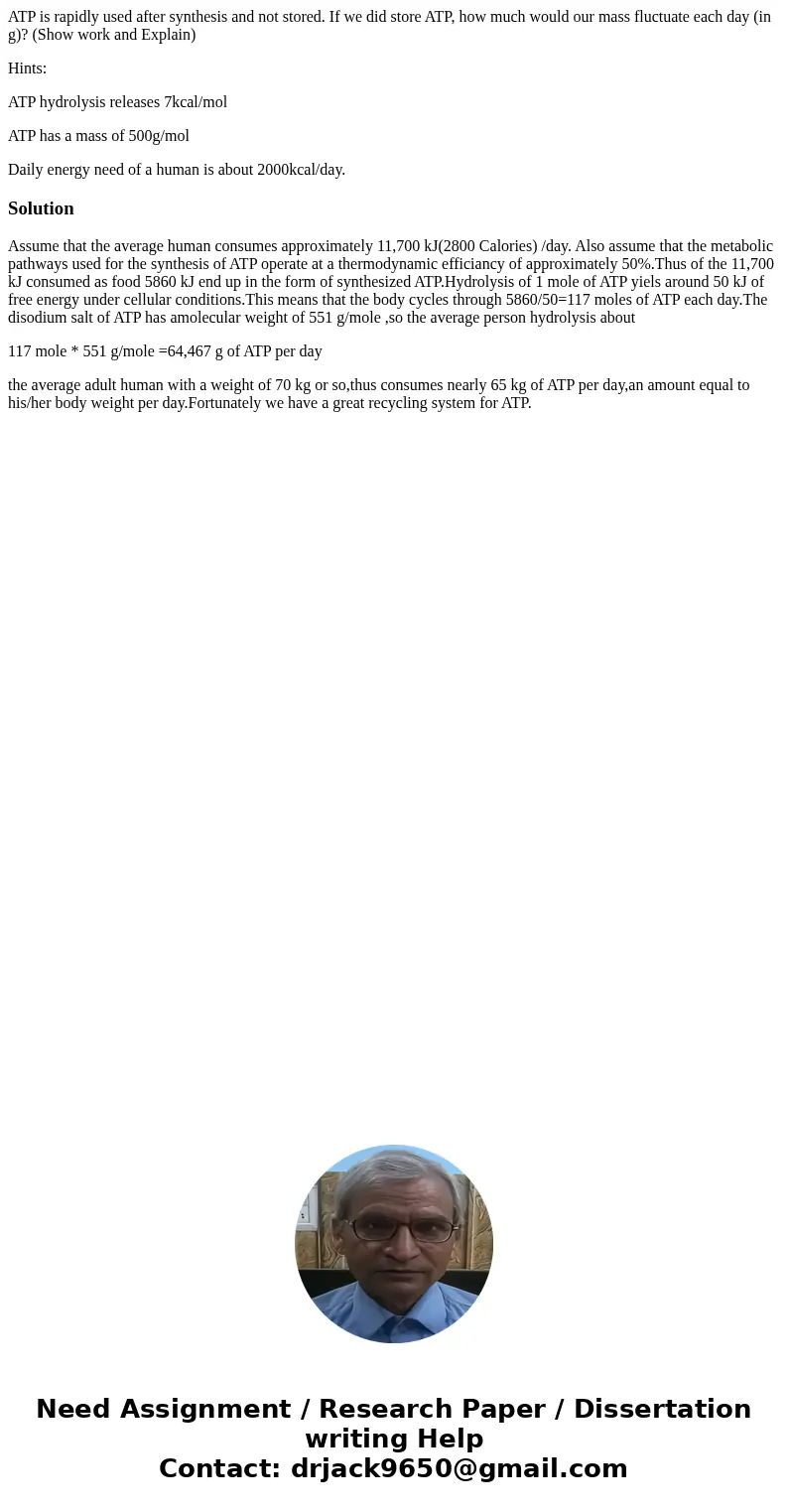ATP is rapidly used after synthesis and not stored If we did
ATP is rapidly used after synthesis and not stored. If we did store ATP, how much would our mass fluctuate each day (in g)? (Show work and Explain)
Hints:
ATP hydrolysis releases 7kcal/mol
ATP has a mass of 500g/mol
Daily energy need of a human is about 2000kcal/day.
Solution
Assume that the average human consumes approximately 11,700 kJ(2800 Calories) /day. Also assume that the metabolic pathways used for the synthesis of ATP operate at a thermodynamic efficiancy of approximately 50%.Thus of the 11,700 kJ consumed as food 5860 kJ end up in the form of synthesized ATP.Hydrolysis of 1 mole of ATP yiels around 50 kJ of free energy under cellular conditions.This means that the body cycles through 5860/50=117 moles of ATP each day.The disodium salt of ATP has amolecular weight of 551 g/mole ,so the average person hydrolysis about
117 mole * 551 g/mole =64,467 g of ATP per day
the average adult human with a weight of 70 kg or so,thus consumes nearly 65 kg of ATP per day,an amount equal to his/her body weight per day.Fortunately we have a great recycling system for ATP.

 Homework Sourse
Homework Sourse